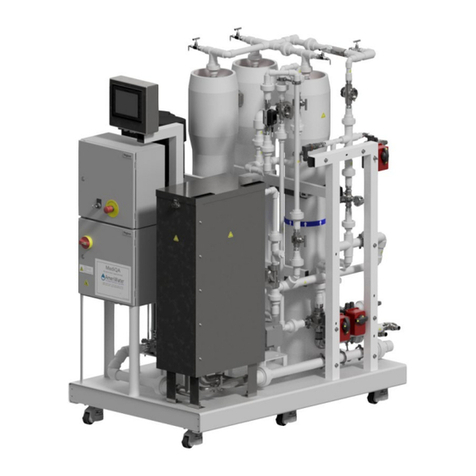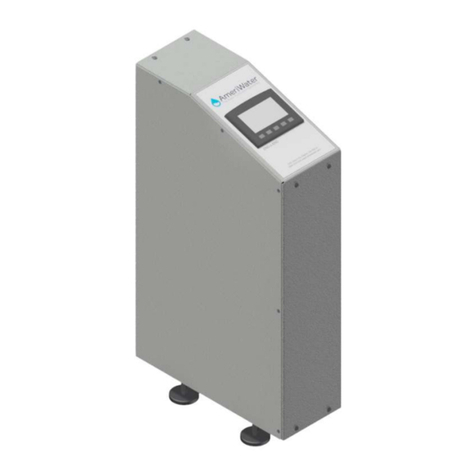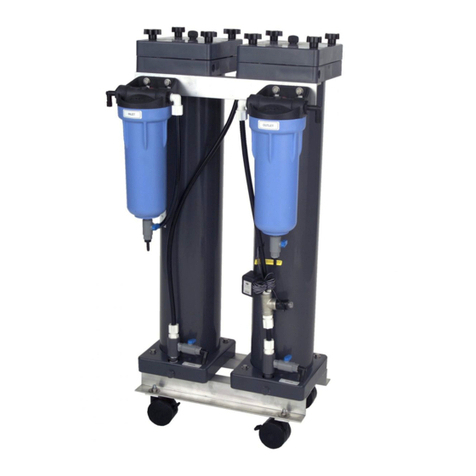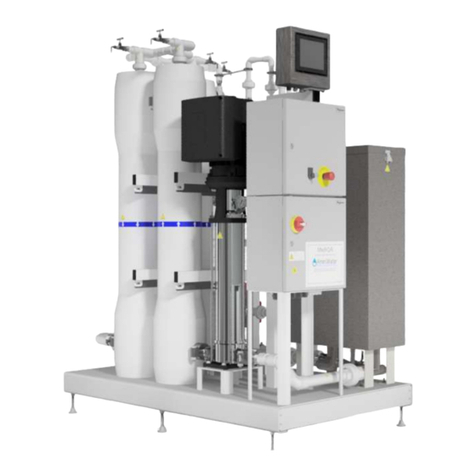
76/07
Backwash Supply
NOTE: If filter is designed to use cooling system water for backwash, no backwash supply pipe
is required in this section. (Skip to waste line section)
NOTE: Clean water supply is always recommended for closed loop filters.
Backwash supply requires min / max 30/70 psig. An isolation valve is
recommended, convenient tofilter. Backflow preventer is recommended and
commonly required bylocal codes when potable water is used for backwash. A
pressure gauge is recommended atthe discharge of the backflow preventer.
NOTE: An efficient backflow preventer will create approximately 12 psig loss in line
pressure. A minimum of 30 psig must be available at outlet side of backflow
preventer. If backwash and cooling tower make up are connected to the same
supply, be sure 30 psig is available when tower is calling for water.
Connect properly sized backwash supply line to inlet side of backwash flow control device.
Waste Line
NOTE: Ensure drain is adequately sized and free flowing to handle backwash flow.
A swing check valve is recommended for waste lines with a vertical lift. Check valve should be
installed immediately after the filter waste line connection.
Ball Type or Spring Type Checks Are Not Acceptable.
For drainpipe runs exceeding 20 feet or an 8-foot lift from filter system, consult AmeriWater for pipe
size recommendations.
Connect properly sized drain line to filter backwash drain.
1.7 Media Installation
WARNING!WARNING! WARNING!
PROPER PROTECTIVE EQUIPMENT MUST BE WORN WHEN INSTALLING MEDIA. PERSONNEL
HANDLING MEDIA MUST WEAR A DUST MASK OR RESPIRATOR FOR LUNG PROTECTION AND
GOGGLES FOR EYE PROTECTION. REFER TO ENCLOSED MATERIAL SAFETY DATA SHEET (MSDS)
FOR COMPLETE INFORMATION (Section 2).
a) Media containers are labeled (Ref: ML). Separate containers according to vessel and order of
addition. Before installing media, inspect media containers for loss during shipping. Notify
































